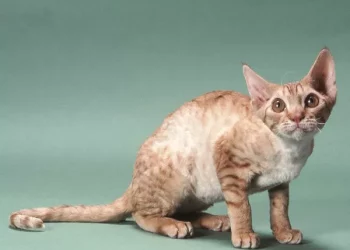Ringneck parrots, scientifically known as Psittacula krameri, are captivating avian companions cherished for their vibrant plumage and charming personalities. Distinguishing between male and female ringneck parrots can be challenging, particularly for inexperienced individuals. In this comprehensive guide, we will explore the key characteristics, behaviors, and additional methods that can help you confidently identify the gender of these beautiful birds.
-
Physical Differences:
- Plumage Colors:
One of the most prominent distinctions between male and female ringneck parrots lies in their plumage coloration. Typically, male parrots exhibit more vivid and brighter hues compared to females. Male Indian ringneck parrots, for instance, showcase vibrant emerald green feathers with hints of blue on their wings and tails. In contrast, females tend to have duller shades of green, often with a grayish tinge. However, it is important to note that there can be some variations among individuals, and certain color mutations may affect the typical gender-based color patterns.
- Black Ring:
Adult male ringneck parrots develop a striking black or dark gray ring around their neck, which serves as a significant visual identifier. This ring is absent in females, making it a reliable feature to differentiate the sexes. It is important to note that the presence of a black ring is more pronounced in mature males, and younger males may display a less defined or incomplete ring.
- Beak Shape:
In some cases, males and females can be differentiated by their beak shape. Males often have larger, more pronounced beaks compared to females. The beak of a male ringneck parrot may appear slightly hooked or bulging at the base. Females, on the other hand, tend to have smaller and slightly tapered beaks. However, it is worth mentioning that beak shape alone is not a foolproof method for gender identification, as there can be variations within each gender.
-
Behavioral Differences:
- Vocalizations:
Male and female ringneck parrots possess distinct vocalizations. Males are generally more vocal and have a wider range of sounds, including mimicking human speech and other sounds in their environment. They may engage in repetitive phrases or tunes, showcasing their ability to learn and imitate various sounds. Females, on the other hand, are typically quieter and produce simpler calls and chirps. They may occasionally vocalize, but their vocal repertoire is generally less extensive compared to males.
- Courtship Display:
During courtship, male ringneck parrots exhibit specific behaviors to attract females. They may puff up their feathers, bob their heads, and engage in various body movements to showcase their readiness for mating. These behaviors, combined with vocalizations, are part of their courtship rituals to impress females. Females, on the other hand, tend to be more passive during courtship and may display minimal or no such behaviors. They observe the male’s courtship displays and make their choice based on various factors, including the male’s appearance, behavior, and overall compatibility.
-
Age-related Differences:
- Eye Color:
Determining the age of a ringneck parrot can provide additional insight into their gender. In juvenile birds, both males and females have dark-colored eyes. However, as they mature, males’ eyes transition into a pale yellow or light gray shade, while females’ eyes remain darker, usually black or brown. This change in eye coloration can be a useful clue to identify the gender of ringneck parrots as they reach sexual maturity.
- Behavior during Maturity:
As ringneck parrots reach sexual maturity, their behavior can provide further clues about their gender. Males often become more territorial, assertive, and display increased vocalizations. They may become more protective of their territory, belongings, or their chosen mate. In contrast, females tend to be relatively calmer and less prone to territorial behaviors. They may display nurturing tendencies and become more focused on nesting or caring for their young if they successfully breed.
Conclusion:
Identifying the gender of ringneck parrots requires careful observation of their physical characteristics and behaviors. The plumage coloration, presence or absence of a black ring, beak shape, vocalizations, courtship display, eye color, and behavior during maturity are all valuable indicators to consider. However, it is important to note that these characteristics can vary among individual birds, and there can be exceptions or variations within each gender. Therefore, for a definitive determination, professional avian DNA testing is the most accurate method. By combining these various cues and methods, you can enhance your ability to discern the sex of these delightful avian companions, enabling you to better understand their unique traits and cater to their specific needs.
Recommended reading:

























